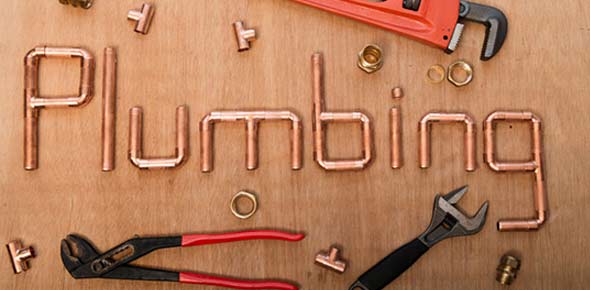A plumbing fixture used for washing the middle private part of the...
A room equipped with a only 1 WC and Lavatory
It conveys all storm clear water or surface water waste except...
An act to regulate the trade of Master Plumber in the Philippines
Is a device used in a drainage system to prevent the reversal of flow
It is adopted when the street drainage is higher in elevation than the...
Storm Drain is installed provided a slope of NOT MORE THAN ______ PER...
It is installed outside the foundation wall of the building.
A house drain that receives discharges from industrial equipment that...
It is a receptacle used to receive water to be drained from the floor...
A group of fixtures consisting 1WC, 1 or 2 Lavatory, Bathtub...
Is a device used in kitchens serving hotels, dining rooms, clubhouses...
A type of house drain that receives discharges of sanitary waste as...
A valve opened and closed by the fall and rise respectively, of an...
It is not preferred to discharge into the septic tank.
It is popularly known as water conductor or downspout.
A flange that closes the end of a pipe. There is no opening for the...
Sanitary Sewage is also known as
The unobstructed vertical distance through the free atmosphere between...
It is sometimes located under the basement floor or within the walls...
The House Drain should be sized correctly to have a flow of about ___...
The flowing back of used, contaminated or polluted water from plumbing...
A room equipped with a shower stall or bathtub.
An act to regulate the practice of Sanitary Engineering in the...
A device or means to prevent flow of liquid from returning to source...
It occurs due to an increased reverse pressure above the supply...
Is a receptacle used to catch surface water drained from...
Is a device designed to convey wastes from garage, wash rack, grease...
Not a preferred type of backflow valve, because of its poor...
It is a device installed in a house drain immediately inside the...
Appropriate FITTINGS for a Storm Drain.
A part of the vent line, which connects directly with an individual...
Environment Code of the Philippines
Fixture UNIT VALUE of a Bathtub
Fixture UNIT VALUE of a Shower Bath
Fixture UNIT VALUE of a Laundry Tub
Fixture UNIT VALUE of ONE Bathroom consisting of 1 water closet,...
Consists of a running trap installed under the basement floor to...
Civil Code of the Philippines
Provincial Water Utilities Act
Fixture UNIT VALUE of a Kitchen Sink
A type of house drain that receives the discharge of sanitary and...
The most preferred type of backflow valve because it has the...
A piping arrangement in which a drain from a fixture, appliance or...
The date when the Sanitary Engineering Law and Plumbing Law are...
Sanitation Code of the Philippines
A sink designed primarily to receive wastes from bedpans and having a...
It is also known as the COLLECTION LINE of a Plumbing System
A condition or any arrangement whereby reverse flow can occur.
Water Code of the Philippines
Fixture UNIT VALUE of a Public or Hotel Sink
A portion of the plumbing system that receives discharges of all soil...
What is the MAXIMUM number of fixture units that maybe connected to a...
It is that portion of the horizontal drainage system which stars from...
Reduces the action scouring action in the pipe, thus the solid waste...
A loop of pipe rising approximately 35 feet, at its top most point...
Fixture UNIT VALUE of a Water Closet
A type of pipe connection in which a ball-shaped end is held in a...
What is the MAXIMUM number of fixture units that maybe connected to a...
What is the MAXIMUM number of fixture units that maybe connected to a...
Fixture UNIT VALUE for every 15 square foot of roof drain
What is the MAXIMUM number of fixture units that maybe connected to a...
What is the MAXIMUM number of fixture units that maybe connected to a...
The date when the Philippine Environment Code is signed.
Fixture UNIT VALUE of a Floor Drain
It collects water coming from the downspout leading the accumulated...
Fixture UNIT VALUE of a Urinal
A device installed in a drainage system to prevent reverse flow
The date when the Water Code is signed.
What is the SLOPE of a 125mm DIAMETER house drain pipe with 203...
The date when the Provincial Water Utilities Act is signed.
Fixture UNIT VALUE of a Combination Fixture
What is the SLOPE of a 100mm DIAMETER house drain pipe with 114...
The date when the Sanitation Code is issued.
What is the MAXIMUM number of fixture units that maybe connected to a...
What is the SLOPE of a 100mm DIAMETER house drain pipe with 85 fixture...
What is the SLOPE of a 100mm DIAMETER house drain pipe with 100...
Fixture UNIT VALUE of a Slop Sink
What is the SLOPE of a 125mm DIAMETER house drain pipe with 150...
Fixture UNIT VALUE of a Residential Sink
















